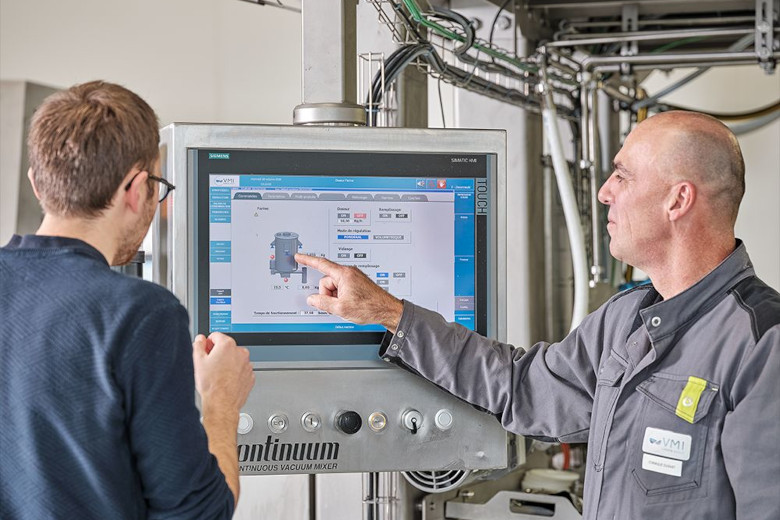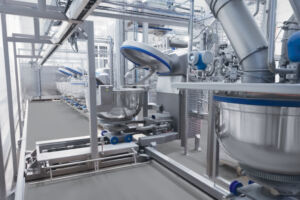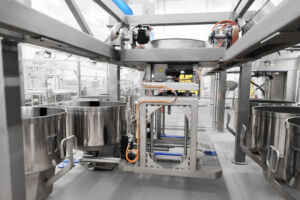
Better-for-you preferences also apply to bread. Several mixing options help increase production volumes while still providing goods that still feel and taste artisan-made. The demand for healthier options in baked goods continues to rise, and the COVID-19 pandemic has only intensified this trend. Consumers are increasingly seeking artisanal products that are made with simple, clean, and high-quality ingredients. Bread is a prime example in this category. To meet this growing demand, both retail and wholesale bakeries are turning to automation to scale up their production of artisan bread while maintaining the desired level of quality.
The process of making artisan bread presents unique challenges compared to mass-produced bread. The incorporation of liquid preferments, longer fermentation times, and precise dough management require careful attention and expertise. However, the advancement of automation technology has made it possible to overcome these challenges and streamline the production of artisan bread.
Automating the mixing process
Automation plays a crucial role in maximizing the output of artisan bread. By automating the mixing process, bakeries can achieve a higher standard of food safety and establish organized process control. This not only streamlines production but also reduces the number of hands required to handle the dough, minimizing the risk of contamination.
Careful process management and hygiene
Producing artisan bread involves a unique process that integrates liquid preferments and sourdough. Unlike typical pre-packaged loaves found in supermarkets, artisan bread requires less processing and aims for highly hydrated dough with reduced mixing time. However, the addition of yeast and preferments adds complexity to the mixing process and increases the dough preparation time. Therefore, careful management of the mixing process is essential to develop the desired flavor, texture, and shelf life.
One of the challenges is to ensure a minimal increase in dough temperature during mixing. This is possible by optimizing the design of the mixing tools and tanks specifically for premixing, kneading, and fermentation with a precise tool shape, diameter, and position inside the mixing bowl.

Repeatability and accuracy
To achieve consistency in artisan bread production, bakers are able to leverage automation and process programming tools. Through automation, every step of the process, from fermentation and sprouting to degassing and yeast introduction, can be carried out accurately. Bakers can maintain high-quality control and consistency across each batch.
Increasing productivity
For bakeries aiming to produce large quantities of artisan bread, utilizing buffer tanks during fermentation, managed by an automated monitoring system, is highly beneficial. This approach enables the implementation of batch technology, which is well-suited for the complex and time-consuming processes of mixing and fermentation. By adopting batch technology, bakeries can achieve high productivity rates, ranging from 15 to 16 bowls per hour, and establish scalable processes.
Streamlining transfer and cleaning
To optimize the larger assembly line, a solution developed by VMI incorporates a linear bowl transfer system that automates the movement of mixing bowls from ingredient dosing and mixing to resting time – if required – and downstream processing equipment. The system also transfers the mixing bowls to the cleaning-in-place (CIP) cleaning station. This feature is particularly relevant as equipment cleanability minimizes downtime during product changeover.
Optimizing the assembly line
In addition to automating the mixing process, emerging technologies enable the integration of other essential steps, such as premixing, fermentation, and kneading. For instance, VMI’s horizontal premixer allows the initial homogenization of the mixture, which can then be transferred directly into the continuous mixer or buffer tanks for fermentation, the company explains. Simultaneously, other tanks can feed the kneader. VMI’s VERYMIX and CONTINUUM continuous mixers further automate the flow management, facilitating resting phases or transferring the dough to the assembly line, while also reintegrating any dough scraps.
While artisan bread may have traditionally been associated with handcrafted techniques, automation offers a solution that balances efficiency and quality. By embracing automated food processing equipment, bakeries can achieve high productivity rates, maintain control over complex processes, and deliver artisan bread that meets consumers’ expectations for taste, texture, and simplicity.
Photos: VMI
The article was initially published in Baling+Biscuit International magazine. Read the full story in issue 4 – 2023.



